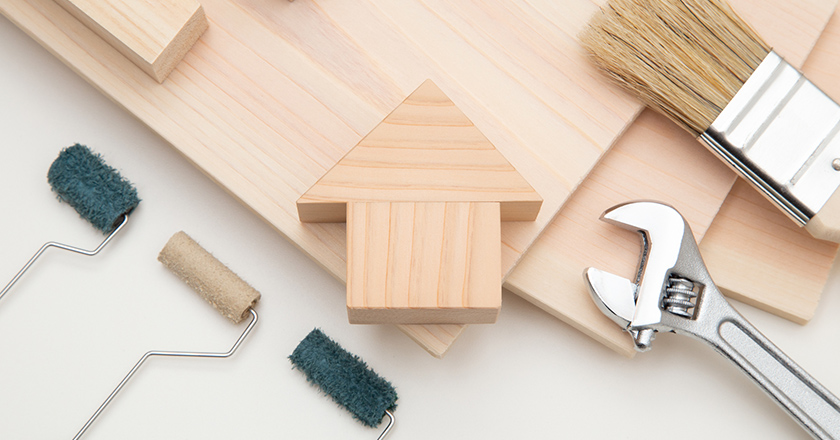Renovation as self-expression, not just a budget compromise
The term “renovation” began to spread as a concept for large-scale building modifications around 2000 in Japan, incorporating the idea of repurposing old buildings in a stylish way. I think this concept also emerged with the idea that using old buildings is not necessarily a sign of poverty, but rather a reflection of spiritual richness.
However, it is also true that constructing new buildings is becoming increasingly hard owing to economic constraints these days. Key contributing factors include the rising cost of building materials and increasing unit labor costs.
During the bubble economy, the construction industry was mocked as 3K―kitsui, kitanai, kiken (tough, dirty, dangerous)―which led to a sharp decline in the number of young people aspiring to join the workforce. According to the national census, the number of carpenters has dropped to less than one-third of its peak, leading to higher labor costs. For the younger generation, buying newly built properties has become much harder than it was in the past.
In Japan, housing often lacks originality, as both condominiums and detached houses tend to follow standardized designs. As a consequence, those interested in homes or spaces that reflect their personal preferences would have chosen newly built properties with custom designs in the past. However, owing to financial constraints, more people opt to renovate older properties.
I will share an example of a detached house built in 1980 that I previously renovated. I initially acquired the property for myself, with the intention of living there.
In Western countries, it is common for old buildings to be passed down to new occupants over time, as their value tends to increase after each renovation. Americans typically buy houses at a low cost when they are young, do DIY renovations on weekends or during holidays, and then sell them for a higher price to move on to better homes. However, Japan is one of the few countries that applies depreciation to buildings, meaning properties over 35 years old lose their value in the case of wooden buildings. Since, however, building demolition and removal incur costs, land is often put up for sale with the old structures still in place. I bought the house that I later renovated, paying only for the land.
The 4-bedroom house was in a great location in Chofu City, just a 5 minute walk from the express train station, with a 20-minute ride to Shinjuku. At that time, with low-interest housing loans, I lived on about 50,000 yen a month. Although it was a wonderful property, I decided to sell it after renovating it because I had to relocate for work. After living on 50,000 yen a month for seven years, I estimated that I saved about 6 million yen compared to renting a house of the same size in the vicinity. I spent the 6 million yen on the renovation.
As today’s family size gets smaller, most families find a 4-bedroom house too spacious. In response to this, a new staircase was built to connect directly to the road at a slightly lower level, allowing the Japanese-style room on the first floor to be used as an office or store. To ensure privacy and improve seismic resistance, the large window on the south side of the living room was converted into a wall. The rooms were minimally finished after removing the ceiling boards and wallpaper, allowing residents to freely make their own modifications.
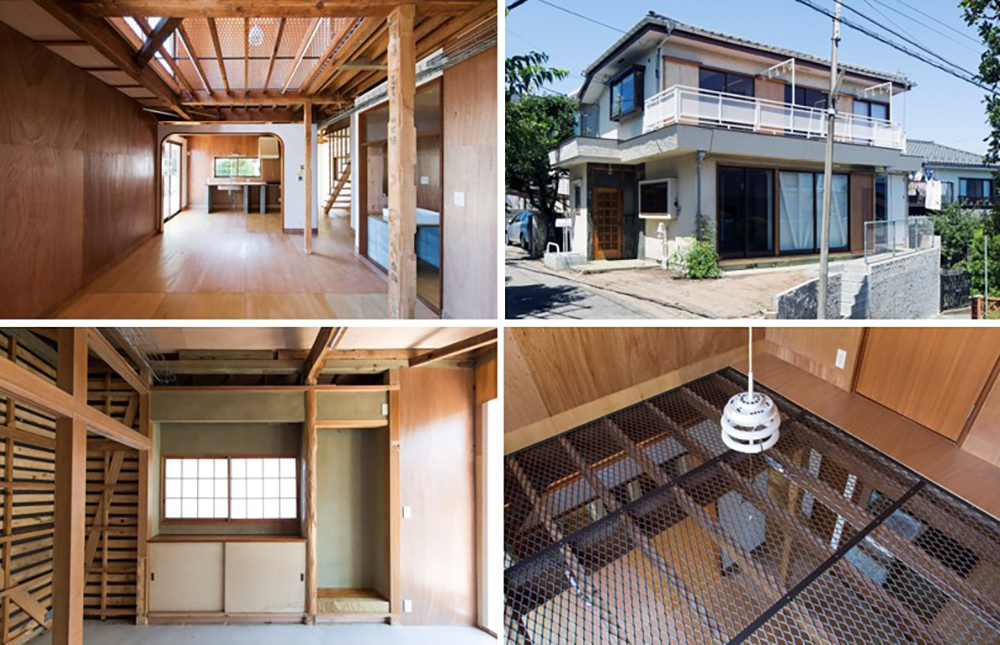
These efforts attracted a great deal of attention. In the end, a couple bought the house: a businessman working for a trading company and his wife, a translator of Japanese and French descent. The wife mentioned that Japanese houses all seemed plain, so she struggled to find a property she wanted to live in. However, she came across this place and immediately liked it. The couple purchased the house at a price that managed to cover the design fee, and the property was successfully transferred.
Renovation, without the need to buy new properties, can more easily reflect individuality, making it an excellent and cost-effective option for those seeking a lifestyle that suits them perfectly.
Feelings and stories matter in reuse, not just engineering
Demolishing a building produces CO2. Naturally, avoiding the demolishment reduces CO2 emissions and benefits the environment. Still, reuse, including renovation, is meaningful not only from an engineering perspective, but also holds value in elements like people’s feelings and stories.
For example, after peeling off the wall, some exposed pillars are engraved with various markings, such as stamps indicating thickness and material, which evokes a sense of nostalgia and sentiment. Inspiring people to imagine the property’s history is also a key aspect of renovation.
Now, I would like to introduce the Japan Pavilion’s exhibition at the Venice Architecture Biennale in 2021, where I served as curator (project director). The Venice Biennale, which began in 1895 before the modern Olympics, is now a biennial exhibition alternating art and architecture. Japan has an art museum in Giardini Park, holding exhibitions for about six months.
As we can see everything on the Internet these days, I wanted to create an exhibition that allows visitors to feel and experience the space. To achieve my project, I enlisted the help of Ms. NAGASHIMA Rikako, a renowned graphic designer. However, she said, “I understand that you want to create something spectacular, but what do architects think about it being torn down in the future and ending up as waste?” Her comment made me realize something.
Despite Japan’s declining population, new houses continue to be built while old ones are demolished one after another. The construction industry generates almost the third-largest amount of waste among all industries. I began to question the use of new materials for the six-month exhibition and decided instead to display a house that would otherwise be abandoned.
I happened to find a charming old house across from my new home, which I moved to from Chofu. When I learned that it was going to be demolished, I decided to use the dismantled parts for the exhibition. It was just a plain old house built in the Showa Period, but when we go to a foreign country, even ordinary things there can seem really cool. I intended to create the opposite situation.
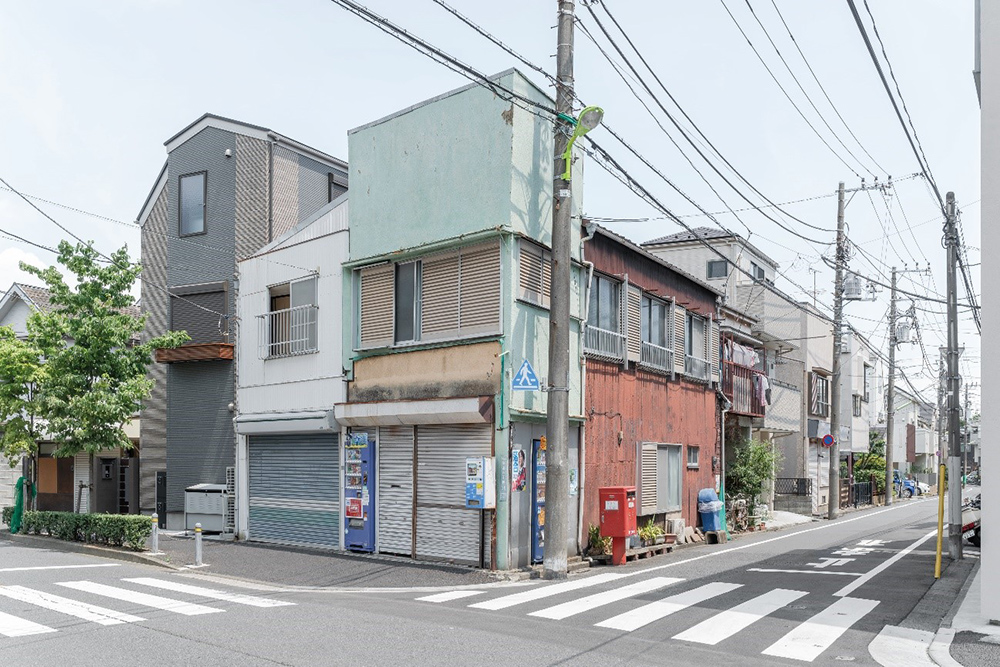
The museum was used as a warehouse, and the open space beneath the building as a workshop for processing reclaimed wood. Then, items made from the wood are displayed in the garden as needed. For example, the roof was assembled and then repurposed into a bench and the wall was used as a screen. Around the coffee table that I made, everyone seemed to enjoy themselves in various ways, with some people even preparing Japanese tea.
The unused materials were displayed inside the museum building, which served as a warehouse. Following the one-way traffic route implemented owing to the COVID-19 pandemic, the house parts were arranged in chronological order alongside photos of the owner and his family, who had been born and raised in the house. After several renovations, old parts and new parts were interwoven throughout the house. When the house was first built in 1954, only wood and paper were used. Later renovations added aluminum sashes, iron, plastic and vinyl wallpaper. These changes over time can be observed, accompanied by the scent of old wood drifting through the air. The exhibition, designed to provide an immersive experience of this ordinary house’s history, left a strong impression on many visitors.
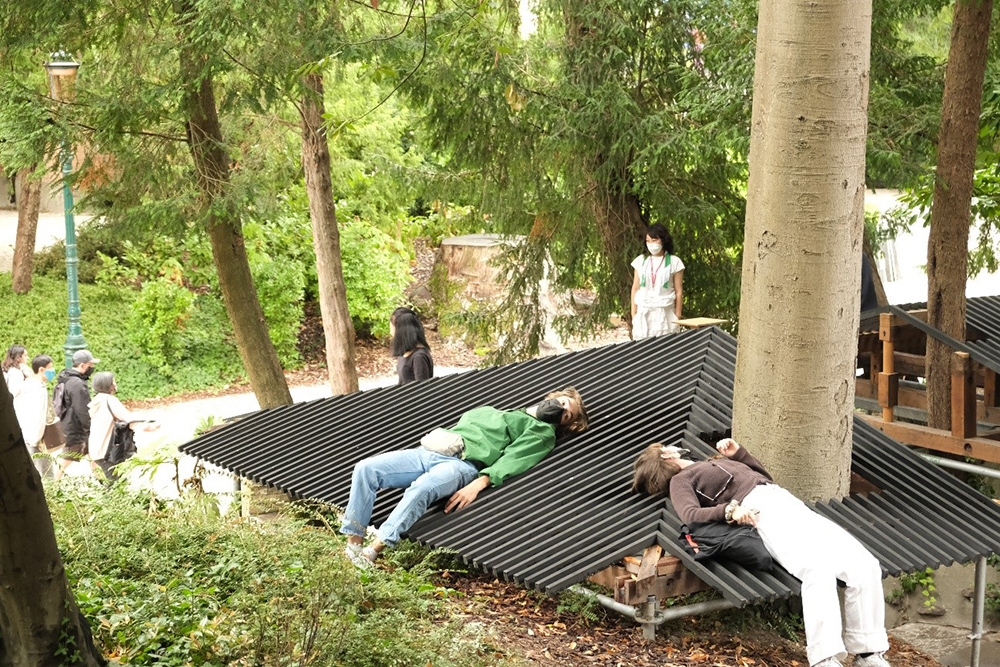
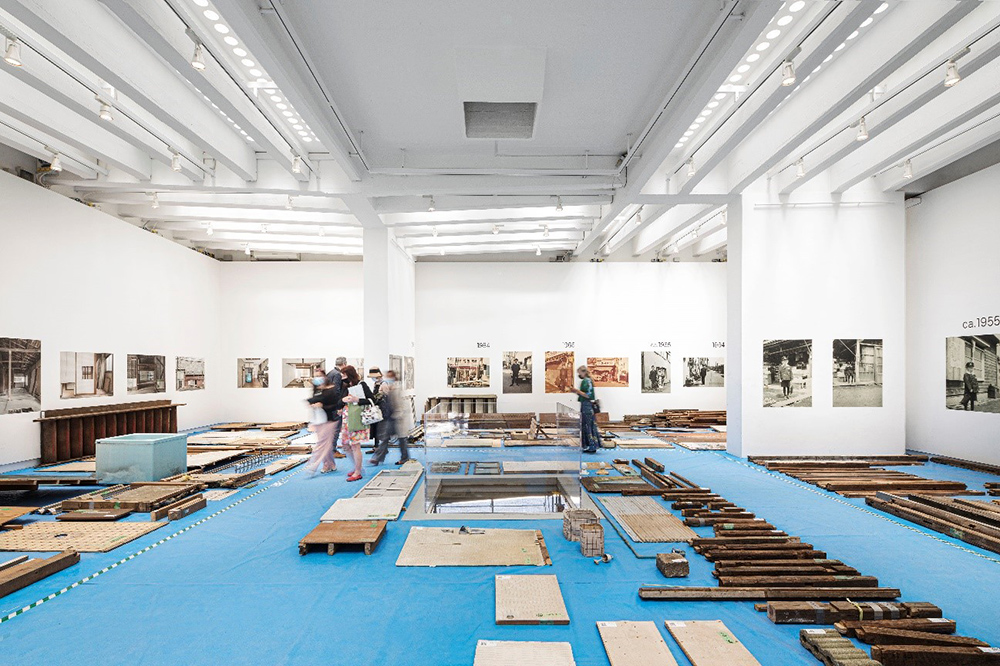
Picture above: ⒸMusashi Makiyama Picture bottom: ⒸAleberto Strada
An Italian designer, intrigued by the classic blue bathtub from the Showa era, reached out to ask if it could be used for the designer’s work. Simply changing locations can sometimes give new value to things that seemed worthless. As I had expected, things looked completely different in a different place. The stools, created by repurposing vinyl tiles from the kitchen and bathroom floors, were also highly popular. The experience gave me an opportunity to reaffirm that shifts in value―like how old things from a distant country can seem charming―are crucial for understanding the past and other cultures.
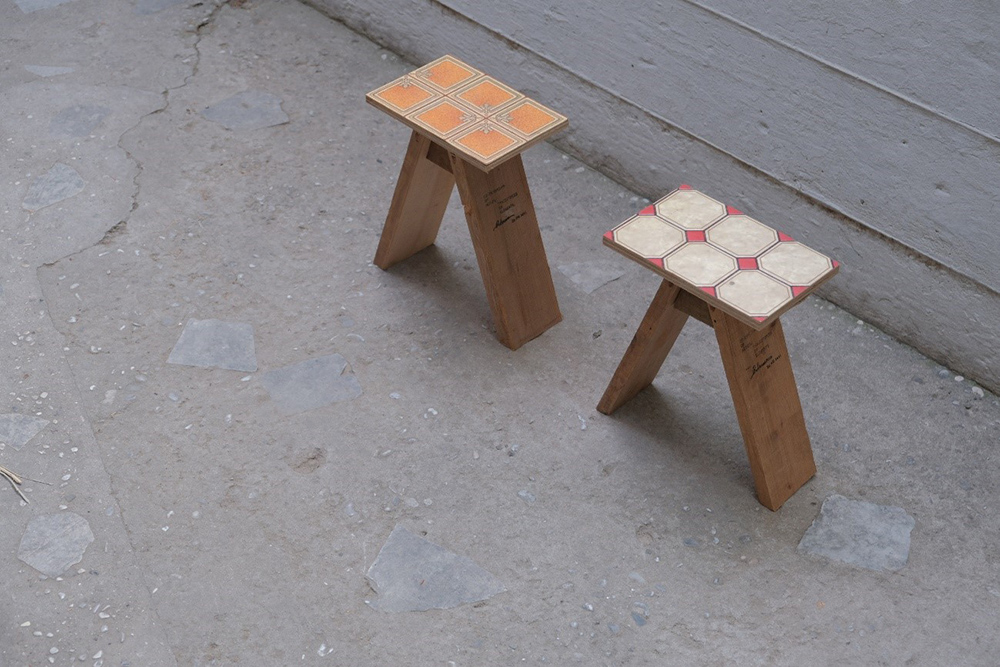
When wisdom and creativity foster attachment, things are passed on
We live while passing on and sharing what others have created. Reusing old materials and renovating buildings, of course, play a significant role in reducing CO2 emissions. Moreover, they give people the sense of carrying forward the past and passing on the stories embedded in these structures―like passing a baton in a relay. Beyond just a product’s quality, people feel more attached to something crafted with ingenuity and dedication.
When we realize that something we own was made by someone and will be used by others even after it leaves our hands, old things start to look more lovable, and we develop a stronger desire to cherish what we use now. Finding something somewhat cute sounds like a more natural reaction than valuing it for being eco-friendly. Realizing that the item is the result of someone’s ingenuity, you may feel more attached to it.
The concept of ownership can be quite presumptuous. The attitude of assuming that it is acceptable to use something paid for in any way one likes is both arrogant and problematic, especially in the context of global environmental issues. If you are aware of living within the chain of things and events, you would naturally aspire to sustainability.
Traditionally, Japanese carpenters have been involved in both building design and construction, meaning they are skilled in both designing and creating structures. A close inspection of old buildings clearly reveals that these structures were created through on-site thinking and continuous refining, reflecting a unique aspect of Japanese culture. Structures, having undergone multiple modifications, reflect the knowledge and everyday realities of the time.
Through observing nameless structures―seemingly simple yet crafted with great care―I learned a lot about design. Ingenuity arises from individuality, such as personal wisdom and ideas. I believe that incorporating such inventive ideas into homes, towns, and the environment can bring more energy to our cities.
Information noted in the articles and videos, such as positions and affiliations, are current at the time of production.

